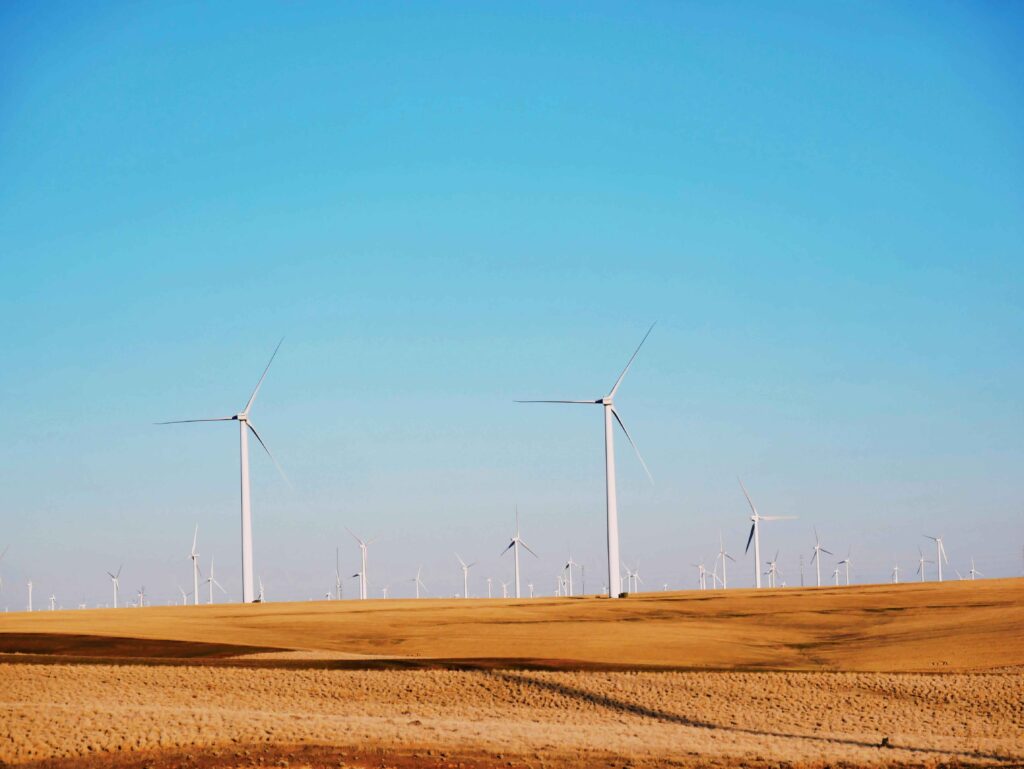The natural resource systems refer to the coupled interactions among natural resources, ecosystems and human activity. But these systems are vital to keep life on Earth going, to provide essential services, and to foster economic development. Effective management and conservation of this species depends upon our understanding of natural resource systems, particularly so in the changed environment.
Natural Resource Education:
Natural resources are materials or components found in the environment and used by people in their different ends. They can be classified into two main categories:
Renewable Resources:
The renewable resources are those which give the ability of recovering naturally over time. Examples include:
- Forests: Timber provide, fuel and habitat for wildlife.
- Water: It is an essential for drinking, agriculture, and industry.
- Soil: It supports the growth of agriculture.
- Fisheries: It will provide food and livelihoods to millions.
Then we will come to the next topic, which is 1B, introducing to natural resources basis. So we will have around two lectures, and these are the topics that will be followed: various factors influencing resource availability and distribution of resources, its uses, then interrelationships among different types of natural resources, concern on productivity issues, which is another very, very key aspect of NRM.
Week 3-4: Resource Management Paradigms
Then we will go to resource management paradigms. We will have around two lectures on this aspect, and the topics that will be covering our evolution of natural resources management and its paradigms, resource extractions, access, and control systems. Friends, control systems on natural resources are a very, very important aspect. This is not very often discussed as a part of academic exercise, but I would like to introduce this aspect to you because that actually has a link with potential conflict as well as its addressable mechanisms.
Week 5: Approaches in Resource Management
Next, we will discuss about various approaches in resource management. We will have around two lectures on this aspect. These are the topics: ecological approach, economic approach, ethnological approach, and implications of this various approaches on NRM.
Week 6: Biodiversity Conservation
On the sixth week, we will discuss about biodiversity conservation of natural resources. Roughly three lectures, we will be having on that aspect. These are the topics that will be discussing: habitat conversion, fragmentation, degradation, and isolation through changes to land use and land cover, then biodiversity conservation and ecosystem services. Today, ecosystem services is one of the very, very talk-about aspects, as most of you might be aware that ecosystem services is actually linked with various other development aspects as well as the sustainability aspect.
Week 7: Participatory Rural Appraisal (PRA) and Rapid Rural Appraisal (RRA)
Then the next topic, next topic on the seventh week, will be participatory rural appraisal, which we call as PRA, and rapid rural appraisal, which we call as RRA. Very important, this is required for the assessment of the natural resources in and around us in the ecosystem. If your PRA and RRA are accurate, then the management of natural resources will be very, very efficient.
Non-Renewable Resources:
What is finite and cannot be replaced in a human timescale are non renewable resources. Examples include:
- Fossil Fuels: Energy that is derived from coal, oil or natural gas.
- Minerals: Extracted metals and non metals for industrial use.
- Nuclear Fuels: Nuclear energy production used uranium and thorium.

Natural Resource System Components:
The interaction of each component in natural resource system of natural resource system is exist. To be effective a manager must understand these components.
- Ecosystems:
A community of living organisms interacting or, alternatively, interacting in a physical environment. They play a crucial role in the functioning of natural resource systems by:
- Providing Habitat: Biodiversity is key to our resilience and stability and is supported through ecosystem.
- Regulating Climate: Storing forests and oceans as carbon sinks, they help to soften the blow of climate change.
- Water Cycle: Water cycle is influenced by ecosystems, namely precipitation,availability of water.
- Human Activities:
Natural resource systems are highly influenced by human activities. These activities include:
- Agriculture: It is possible for land use change, such as land use for food production, to degrade soil and to deplete water.
- Industry: Natural resource extraction and processing can be polluting and destroy habitat.
- Policies and Governance:
Sound policies and governance structures are needed in effective natural resource systems management. Key aspects include:
Week 8: PRA and RRA (Different Applications)
Next, we will come to PRA and RRA, different application on the field, its principles, and how actually you prepare a PRA report. We will be discussing on the various structures of a PRA report and the tools and techniques that one needs to use for natural resources evaluation. So this is very, very important for practical purposes of natural resources management.
Week 9: Technologies for Natural Resource Management
Next, technologies for natural resource management. Here we will have around 2 classes. These are the topic we will be discussing: farmers’ field-based technologies and tools for NRM, that means that what are exactly the technologies that is useful at the farm level, that we will be discussing, and then we will be also discussing few case studies, real case studies from various agro-ecological zones of India, that will give you a, you know, real kind of a feeling that how on-ground this kind of activities can actually be taken care of.
Week 10-11: Community-Based Natural Resources Management (CBNRM)
Next is CBNRM, which we call as community-based natural resources management. Very, very important concept, and most of the people working in the field of environmental sciences, sustainability, NRM, they are aware of this, you know, CBNRM and its importance. So I would, uh, spend quite a significant amount of time on this aspect. Around three to four classes on integrated natural resources management, which is known as INRM, then we will talk about CBNRM, watershed management, and of course, CPR, common property right.

- Regulations: Rules relating to the use and removal of resources.
- Sustainable Practices: Letting known practices that are useful for minimising environmental impact as well as conservation.
- Community Involvement: Incorporating local communities in decision making processes for building sustainable resource management.
- Economic Development:
Many economies rely on natural resource. They offer raw materials for industries, provide jobs, and core to national income. Key points include:
- Agriculture: A large source of employment and food security.
- Energy Production: Economic growth comes from fossil fuels and renewable energy sources.
- Tourism: Tourists who visit natural landscapes and biodiversity give revenue.
- Environmental Sustainability:
Natural resource systems require sustainable management for balancing ecology. This includes:
Biodiversity Conservation: Ecosystem health is assured by protecting species and habitats.
Climate Change Mitigation: Reducing greenhouse gas emission through resource management.
Water Management: Made sure that clean and enough water is supplied to all.
- Social Well-being:
The well being of communities depends on natural resource systems. This includes:
Cultural Values: There are also many communities with deep ties to their natural resources and to each other.
Health Benefits: Clean air, water, green space: these are basic ingredients for public health.
Food Security: Feeding today’s growing population will require sustainable agriculture and fisheries.

Challenges in Natural Resource Systems
- Overexploitation:
Depletion of Resources: Losing out the natural resources to unsustainable extraction and depleting means that they will soon be scarce.
Biodiversity Loss: Species are threatened by overfishing, deforestation and habitat destruction. - Climate Change:
Impact on Ecosystems: Ecosystem capability to provide resources is affected by changing climate patterns.
Increased Natural Disasters: This can mean more, and more severe, weather events, which will have an impact on resource availability. - Pollution:
Water Pollution: Water sources are contaminated by industrial runoff and by agricultural chemicals.
Air Pollution: Fossil fuel combustion emissions hurt air quality and public health. - Inequity of Resource Distribution:
Access Disparities: We now know that access to natural resources is not equal for all communities, which creates inequalities of social and economic nature.
Conflict: Conflict and instability are the result of competition over a scarce resource.
Sustainable Management strategies
To address the challenges facing natural resource systems, several strategies can be implemented: - Resource-Based Management:
Holistic Approach: And consider the links between different resources and different ecosystems.
Stakeholder Collaboration: Make different stakeholders such as governments, technology businesses, local communities involved in decision making. - Sustainable Practices:
Conservation Techniques: This includes practice of ecosystem protection and restoration (including reforestation and sustainable agriculture).
Renewable Energy: Ranging from charts to essays about Europe’s transition into renewable energy, researchers are working to transition to renewable energy sources, and at a scale, to reduce reliance on fossil fuels and lower carbon emissions. - Education and Awareness:
Public Awareness Campaigns: Equip communities with knowledge of why they should manage resource sustainably.
Training Programs: Train for implementation of sustainable agricultural practice and resource conservation technique. You can contact us here. - Policy and Regulation:
Strengthening Regulations: Make the laws that protect natural resources and promote sustainable resources.
Incentives for Sustainability: Provide financial incentives to your companies and people who will adopt sustainable practices for them.
Week 12: Environmental Management System (EMS) and Modeling
Next, we will move to EMS, environmental management system, which is again a very important aspect, not only for NRM but also for other aspects related to environment and ecosystem. So what are the aspects we will be discussing here? Of course, starting with definition and the significance of EMS in developing countries, trends of EMS in India
, objective of national environment policies, principle of NEP, and framework of EMS. Then we will move on to modeling aspect, and how information and communication technology can actually facilitate the natural resource management, and in this aspect,
we will be discussing various, you know, model, crop model, land use model, then multi-criteria decision analysis, which is known as MCDA, precision farming technologies, information and communication technologies for natural resource management.
Course Materials
These are the list of books and reference which you can refer to during the course work. So most of these books are available in public domain.
About the Instructor
Finally, little bit about me to introduce myself. I am, as I said, Sudeep Mitra, associate faculty at the school of agro and rural technology, and head of the center for disaster management and research, which a new center which has been established in January 2021. So for the last 20-21 years, I have been working in the field of NRM, agriculture, and climate change.
So I have been also working in academy and research organizations, government, and also non-government. As you see that I have been also informed with some projects which are running in various parts of the country, as well as various parts of the world. I also have been, you know, task force members of government of India, ah,
two very significant projects, one is on Mahatma Gandhi National Rural Employment Guarantee Scheme, which is, you know, convergent schemes from ministry of rural development, and then very recently also was, you know, a task force member of DST, Typhac, looking at climate change and agriculture aspect, that is, uh, in brief about me.
Conclusion:
Natural resource systems play a critical role in economic development, environmental sustainability, and social wellbeing. But they have some blocking challenges that need to be addressed urgently. A long-term solution to the natural resource systems’ long-term health and viability is to encourage the implementation of integrated management strategies that include the application of sustainable practices and the promotion of education and awareness of those practices.


